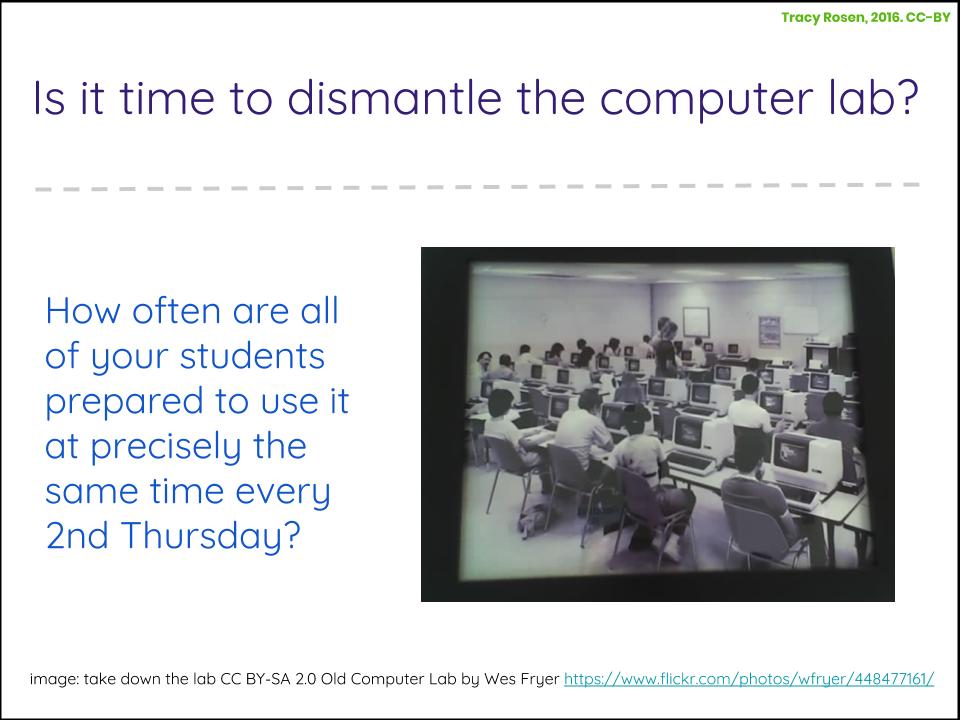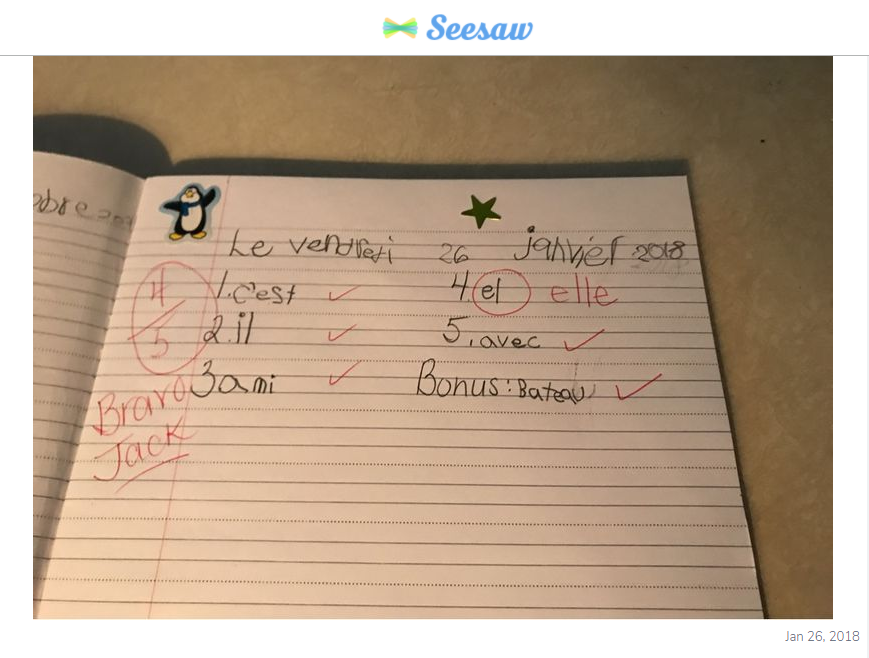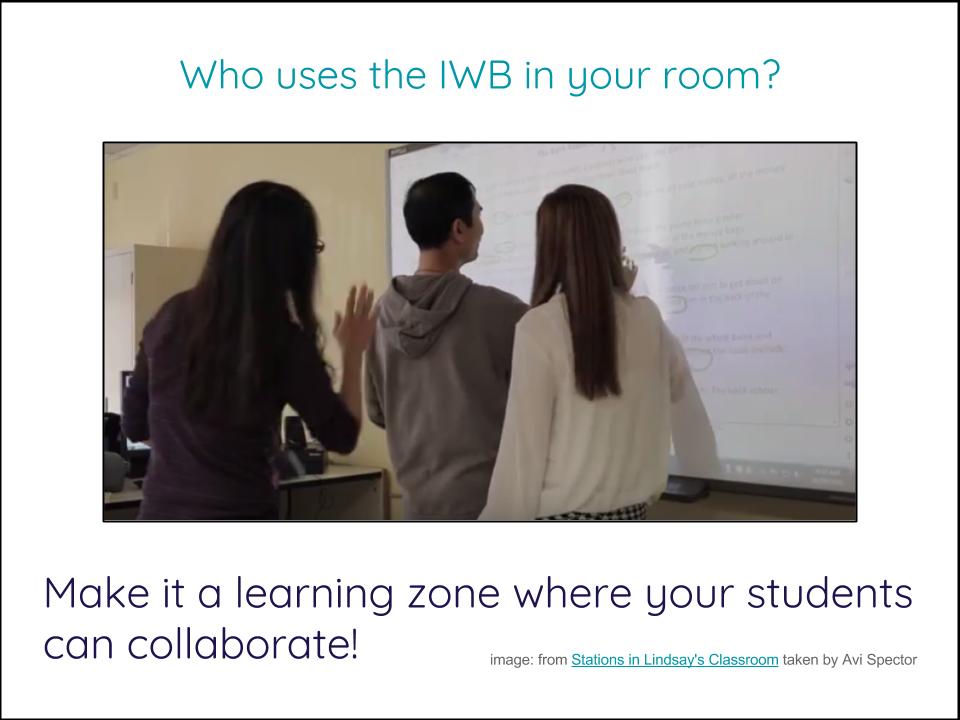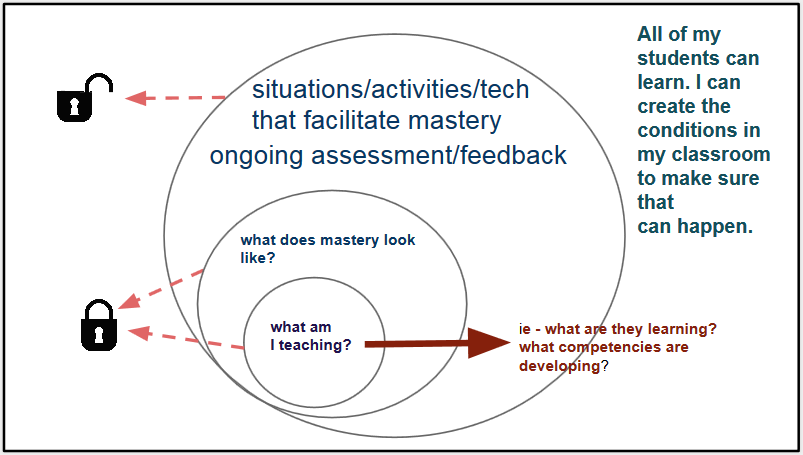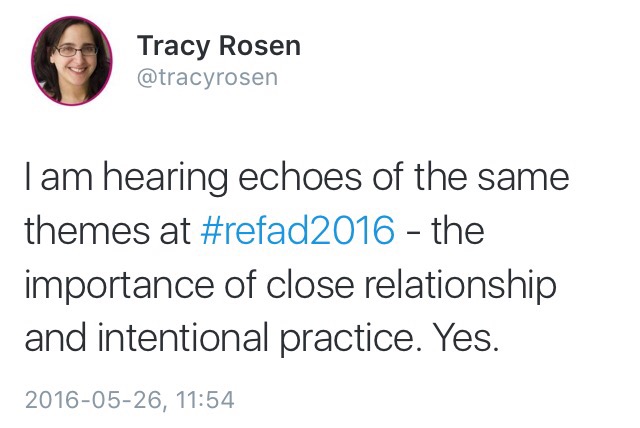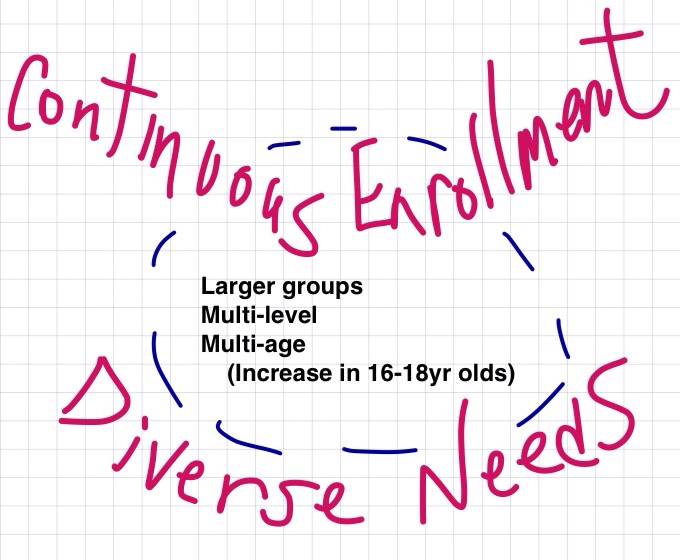Short answer? In service of relationship-based teaching & learning.
For the past little while I have been working on a follow-up video to ICT is not the Goal, that I created for the DevPro Flipped Consultant YouTube channel back in 2013. Here it is – I have been experimenting with different ways to incorporate video and animation using my limited creative toolset (PowerPoint + MovieMaker + Audacity).
Long Answer? Watch the video 🙂 or, if you prefer, read the script below the video, where you will also find links to the credits for the artwork and music in the video.
ICT is (still) not the Goal
I am not interested in how we can best integrate technology. I am interested in how we can solve problems no, scratch that – more importantly, I care about what is working well in our classrooms and how we can amplify THAT.
Amplifying what works is more important for me than solving problems because if we look for problems to solve, our world will be full of problems. But if we look for what works, if we look for our assets, then our world will be filled with what works. Isn’t that an amazing possibility?
Have you ever been in the market for something new – a new car, paint colour, diet. And all of a sudden you see these new things everywhere? It’s not that there is a sudden influx of new cars, colours, and food on the streets, it is just that your brain is noticing them because they have taken a place of prominence.
I truly believe that we find what we look for.
And so I look at the question of technology and learning through that lens and consciously ask what works? How can we create more of it? How are we getting better?
There are different models we can use to measure technology use or integration – one that many know of is called SAMR – or samr. With SAMR, we can look at how we are using technology in our classrooms and determine if we are just teaching the ‘same old, same old’ with new tools or expanding our horizons beyond what was possible before technology.
It`s interesting and does help to focus on the problem of how technology is used …
but there are two issues at play here:
By using a model like this, we are still placing our focus on the tool.
and by looking at our own integration of technology as a problem to solve , are we not surrounding ourselves with problems?
Instead of focusing on tools to solve problems, what if we just focus on what happens in a learning classroom? When I look around for what works, the stories I see and hear all have the same themes:
- There is a caring teacher / student relationship.
- There is a high importance placed on pedagogy.
- The use of technology is allowed to happen naturally, more by need than by design.
The first two of these themes are really interconnected. As teachers, one way that we care about our students is by keeping the bar high on the learning in our classrooms. When I care about my students I want the very best for them and the only way that is really in my control in this area is by ensuring that I continually evolve in my knowledge of my subject-area as well as on strategies for effectively teaching (and learning!) it. More and more, these strategies turn towards accessibility through technology.
When technology use is allowed to happen naturally, it arises out of need more than by design. This one can be trickier to manage in centres where there is a dearth of technology or where it needs to be reserved ahead of time UNLESS we allow students to bring technology into the room and we arrange to share the technology a centre does have with those students who don’t have their own. This may mean that we need to explicitly foster a climate of collaboration and sharing within our classrooms as well as our centres. This may also mean that it becomes ok for a student to walk into another classroom to borrow a tablet or laptop during the school day.
What if your students and centre don’t have access to technology? That is a big reality for a number of us. Remember – ICT is not the goal. Luckily, the first two of my themes are more than just themes. I would call them conditions for learning. It is in the intersection of relationship and pedagogy that passion for learning is ignited. Technology can facilitate the communication of this passion with others, it can facilitate creative manifestations of this passion but it is not the end of the story. The conditions for learning exist beyond those tools.
So I challenge you to look for instances of what works. Actively seek out our assets as teachers and learners and amplify them by sharing them with others, reusing great ideas from others in your classroom, and demanding the tools and conditions necessary to do so from those in a position to give them to you!
Credits
Original script, video, and drawings by Tracy Rosen. RECIT Provincial Service for General Adult Education. Share, adapt, attribute – CC BY 4.0 – May 2015
Prayer Loop Song, sampled in the intro with permission from Supaman, Many thanks!
View the video here (it is stunning): https://www.youtube.com/watch?v=_0jq7jIa34Y
Appreciative Inquiry cartoon by Jeff Logan, 2012. Used with permission. Thanks!
See it on Jeff’s blog here: http://leadershipoffools.com/2013/04/25/train-your-weakness-race-your-strength/
Excerpt from Nova Career Centre’s video Resource Centre – supporting our students
Used with permission – thank you! https://www.youtube.com/watch?v=8kX0cfPt51Q
Excerpt from BYOD Success Story – No Internet? No problem! By Avi Spector & Hilda Smolash. Used with permission, thank you! https://youtu.be/XrXMS9ak-hg
Image of hammer, created with HaikuDeck. https://www.haikudeck.com/
Unconnected by Chapendra on Flickr, shared with a CC BY-NC 2.0 License
https://www.flickr.com/photos/chaparral/1198896696/sizes/o/
14th Chinup by Ian on Flickr, shared with a CC BY-SA 2.0 License
https://www.flickr.com/photos/peanutian/2243427968/sizes/l
Quotes on pedagogy from: Smith, M. K. (2012). ‘What is pedagogy?’, the encyclopaedia of informal education. [http://infed.org/mobi/what-is-pedagogy/. Retrieved: May 17, 2015].
Additional images from Pixabay, http://pixabay.com/ shared via a Creative Commons Public Domain license.
List of resources referenced in the video
SAMR – accredited to Reuben Puentedura http://www.hippasus.com/rrpweblog/
Quebec Adult Education Common Core Basic Education Programs, http://www.recitfga.qc.ca/english/programs.htm
Changing the way we teach math: A Manual for Teaching Basic Math to Adults
By Kate Nonesuch http://bit.ly/ChangeMath
PD Mosaic – resource tool for personalized PD http://pdmosaic.com
BYOD in Secondary Math – Pinterest board by Rafranz Davis https://www.pinterest.com/mathwhiz11/byod-in-secondary-math/
